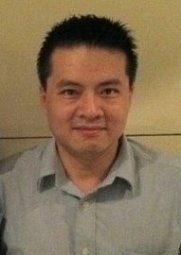By Christopher Wanjek | LiveScience.com
Source: http://www.livescience.com/18244-sugar-toxic-regulations.html
A spoonful of sugar might make the medicine go down. But it also makes blood pressure and cholesterol go up, along with your risk for liver failure, obesity, heart disease and diabetes.
Sugar and other sweeteners are, in fact, so toxic to the human body that they should be regulated as strictly as alcohol by governments worldwide, according to a commentary in the current issue of the journal Nature by researchers at the University of California, San Francisco (UCSF).
The researchers propose regulations such as taxing all foods and drinks that include added sugar, banning sales in or near schools and placing age limits on purchases.
Although the commentary might seem straight out of the Journal of Ideas That Will Never Fly, the researchers cite numerous studies and statistics to make their case that added sugar — or, more specifically, sucrose, an even mix of glucose and fructose found in high-fructose corn syrup and in table sugar made from sugar cane and sugar beets — has been as detrimental to society as alcohol and tobacco.
Sour words about sugar
The background is well-known: In the United States, more than two-thirds of the population is overweight, and half of them are obese. About 80 percent of those who are obese will have diabetes or metabolic disorders and will have shortened lives, according to the UCSF authors of the commentary, led by Robert Lustig. And about 75 percent of U.S. health-care dollars are spent on diet-related diseases, the authors said.
Worldwide, the obese now greatly outnumber the undernourished, according to the World Health Organization. Obesity is a public health problem in most countries. And chronic diseases related to diet such as heart diseases, diabetes and some cancers — for the first time in human history — kill more people than infectious diseases, according to the United Nations.
Less known, and still debated, is sugar’s role in the obesity and chronic disease pandemic. From an evolutionary perceptive, sugar in the form of fruit was available only a few months of the year, at harvest time, the UCSF researchers said. Similarly, honey was guarded by bees and therefore was a treat, not a dietary staple. [6 Easy Ways to Eat More Fruits & Veggies]
Today, added sugar, as opposed to natural sugars found in fruits, is often added in foods ranging from soup to soda. Americans consume on average more than 600 calories per day from added sugar, equivalent to a whopping 40 teaspoons. “Nature made sugar hard to get; man made it easy,” the researchers write.
Many researchers are seeing sugar as not just “empty calories,” but rather a chemical that becomes toxic in excess. At issue is the fact that glucose from complex carbohydrates, such as whole grains, is safely metabolized by cells throughout the body, but the fructose element of sugar is metabolized primarily by the liver. This is where the trouble can begin — taxing the liver, causing fatty liver disease, and ultimately leading to insulin resistance, the underlying causes of obesity and diabetes.
Added sugar, more so than the fructose in fiber-rich fruit, hits the liver more directly and can cause more damage — in laboratory rodents, anyway. Some researchers, however, remained unconvinced of the evidence of sugar’s toxic effect on the human body at current consumption levels, as high as they are.
Economists to the rescue
Lustig, a medical doctor in UCSF’s Department of Pediatrics, compares added sugar to tobacco and alcohol (coincidentally made from sugar) in that it is addictive, toxic and has a negative impact on society, thus meeting established public health criteria for regulation. Lustig advocates a consumer tax on any product with added sugar.
Among Lustig’s more radical proposals are to ban the sale of sugary drinks to children under age 17 and to tighten zoning laws for the sale of sugary beverages and snacks around schools and in low-income areas plagued by obesity, analogous to alcoholism and alcohol regulation.
Economists, however, debate as to whether a consumer tax — such as a soda tax proposed in many U.S. states — is the most effective means of curbing sugar consumption. Economists at Iowa State University led by John Beghin suggest taxing the sweetener itself at the manufacturer level, not the end product containing sugar.
This concept, published last year in the journal Contemporary Economic Policy, would give companies an incentive to add less sweetener to their products. After all, high-fructose corn syrup is ubiquitous in food in part because it is so cheap and serves as a convenient substitute for more high-quality ingredients, such as fresher vegetables in processed foods.
Some researchers argue that saturated fat, not sugar, is the root cause of obesity and chronic disease. Others argue that it is highly processed foods with simple carbohydrates. Still others argue that it is a lack of physical exercise. It could, of course, be a matter of all these issues.
Christopher Wanjek is the author of the books “Bad Medicine” and “Food At Work.” His column, Bad Medicine, appears regularly on LiveScience.
Filed under: Uncategorized | Leave a comment »









 My name is Thomas Kong. I have been a diabetic patient for the past 10 years.
My name is Thomas Kong. I have been a diabetic patient for the past 10 years.





